My good friend Kirk Deeter has given me several really good pieces of advice over the years when it comes to fly fishing, not the least of which was before my first-ever trip to fish the flats some 16 years ago: “Be sure to wear quick-dry underwear. You’ll be a lot more fun to be around back at the lodge.”
But perhaps the best advice Kirk ever gave me was long before the underwear tip (which was solid, as most of you likely know). He and I were fishing the Rio Grande outside of South Fork, Colorado, during one of the river’s signature evening caddis hatches. The Rio Grande’s stunning brown trout were on the feed. I’d managed to catch a few, but Kirk was clearly doing better than I was. We were both casting crippled caddis patterns upstream, hitting productive pocket water as we slowly walked against the current. Sensing my frustration as I lost yet another brown after what I thought was an excellent long cast tight against the bank, Kirk looked over at me and uttered three fateful words.
“Move your feet.”
By this, he meant, “get closer to the target.” In a situation like the one we were experiencing, the Rio Grande’s browns weren’t being terribly shy. A full-throated, midsummer caddis hatch was under way, and the fish were dialed in. I didn’t need to launch 50-foot hero casts with my 4-weight fly rod — what I needed was a spot-on 25-foot cast that gave me better line control to combat the river’s conflicting currents. Mending 20 to 25 feet of line is a hell of a lot easier than trying to throw a belly into a line that’s headed right at you at different speeds.
Now, “move your feet” might seem like nebulous counsel, but I immediately understood what Kird was getting at. I reeled in 20 feet of fly line, blew my fly dry and started walking more than casting. By the time the sun dipped behind the San Juans, I was matching Kirk, fish for fish, on one of the most storied rivers in the Southwest.
It works for more than just trout
Over the years, I’ve managed to apply this advice to many different situations. There are times, of course, where getting too close kills your chances — casting a shadow over a Silver Creek rainbow will send the trout into hiding for an hour. But, generally speaking, every fly fisher is going to catch more fish if they’re casting as little line as possible, regardless of what fish they’re chasing.
A few years back, while fishing the expansive waters of southern Mexico’s Chetumal Bay for bonefish, the angler I was fishing with was fairly new to fly casting — she’d been at it for just a couple of years and this visit to Mexico was her first to the salt. She was incredibly frustrated with her casting acumen — she’d learned on trout, not bonefish, and her double haul was virtually non-existent. So, rather than try to cajole her into an on-the-flats casting lesson, I instead simply told her to move her feet more, walk quietly and watch for the bay’s plentiful bones as they worked their way toward her along the edges of a little spit of mangroves. Then, with her able trout cast, she could put her line well out in front of the encroaching fish and just kind of wait them out.
Was it the ideal set of circumstances? No. But for someone armed with a limited casting range, moving her feet proved to be better than trying to clumsily throw 50 feet of fly line and put a Gotcha on a target the size of a basketball. And the proof was in the results. She caught bones. A lot of them.
A decade or so ago, my daughter and I were fishing on one of our favorite mountain streams here in eastern Idaho for some of our prized native cutthroats. At the time, she was enamored with tenkara fishing, which requires anglers to approach their targets thoughtfully. Her tenkara rod was 13 feet long, and she had about 15 feet of line — under the best of circumstances, she might have 25 feet of distance to play with when making a cast. Upon spotting a rising fish, it didn’t take her long to come to the realization that, in order to put a fly over her target, she’d need to get closer. She’d need to move her feet. To this day, I’m convinced that tenkara angling is the ideal introduction to fly fishing — not only does it help new anglers with the mechanics of a fly cast, it helps them become more aware of their feet and the need to carefully approach target fish by getting closer, not by throwing another 20 feet of fly line.
Good advice is lasting advice
That evening in Colorado, after cleaning the fish smells off our hands, Kirk and I ventured down to one of the bars in South Fork, and tipped back a couple of pints. I thanked him for the advice, and we chatted a bit about the little details that, in time, become second nature for fly fishers. We all develop habits — some good, some bad. But good habits can become lasting habits if we remember the tips shared with us by others. Good advice has staying power.
“Somebody once gave me that advice when I was fishing in Michigan years ago,” Kirk said. “I’m glad I got to pay it forward.”
We chatted some more, and then Kirk noticed that, behind the bar, the barkeep was pouring absinthe over a sugar cube for one of his other customers. He perked up and elbowed me, pointing at the laborious process that goes into crafting the ideal absinthe cocktail.
“We should do that,” he said, nodding at the newly crafted drink that conjured up some fuzzy New Orleans memories that I’d tucked away, and for good reason. I shook my head.
“You gave me some good advice today,” I said. “Let me return the favor.” I then got the bartender’s attention.
“Two more beers,” I said. Then I looked at Kirk and smiled. “You’ll thank me in the morning.”
Like I said, good advice is lasting advice.

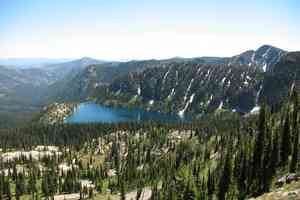





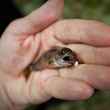
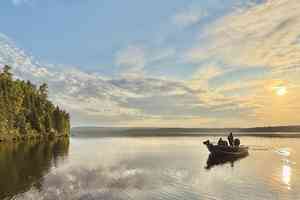
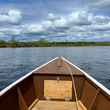
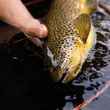

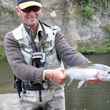
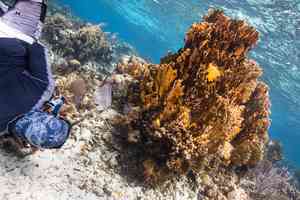




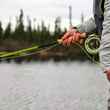



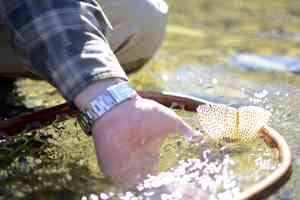
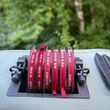
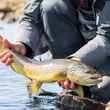


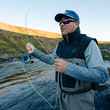
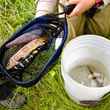

Comments